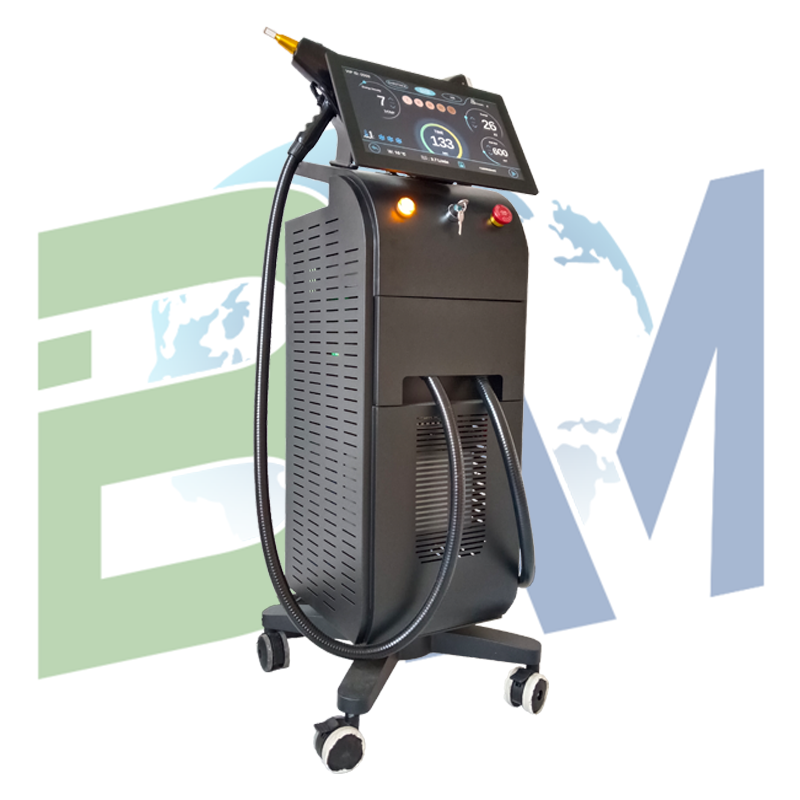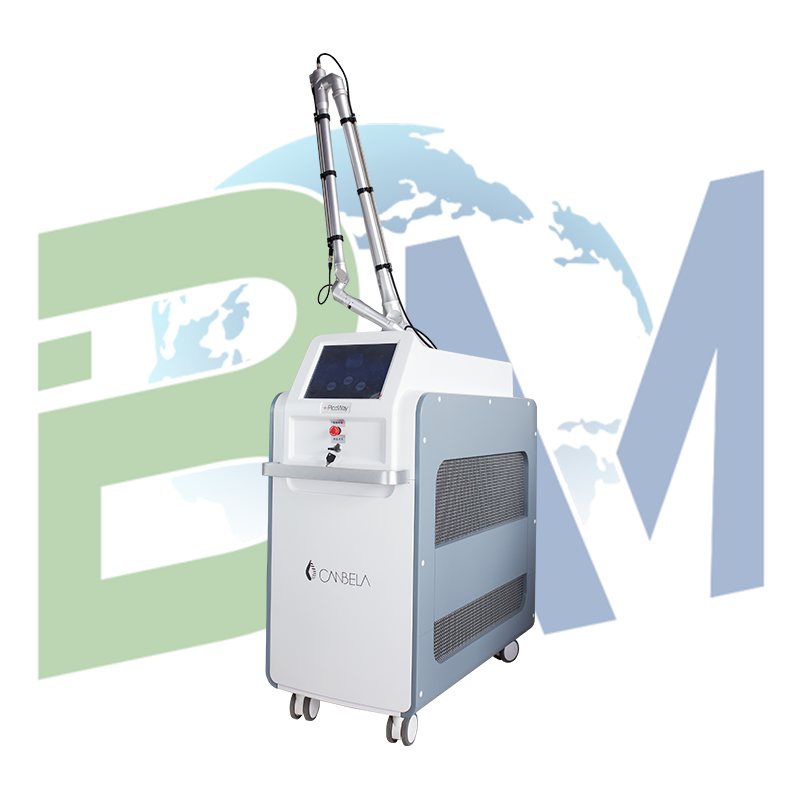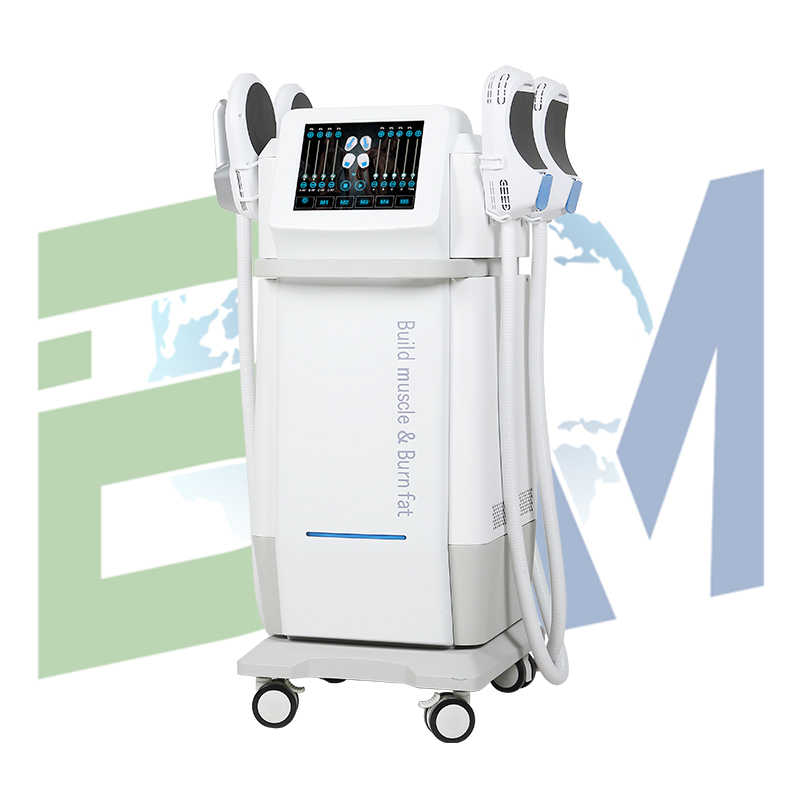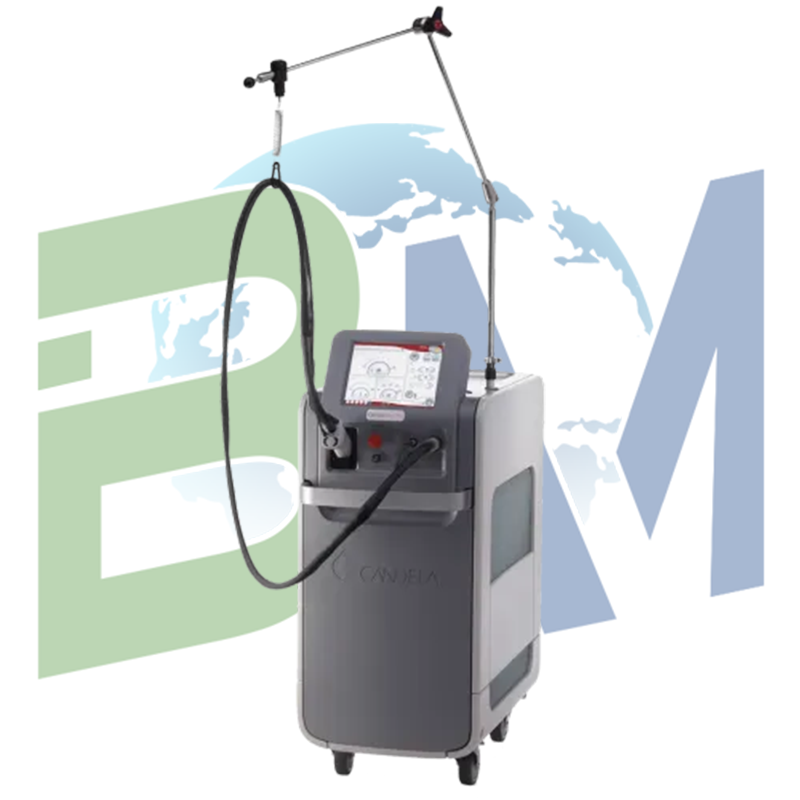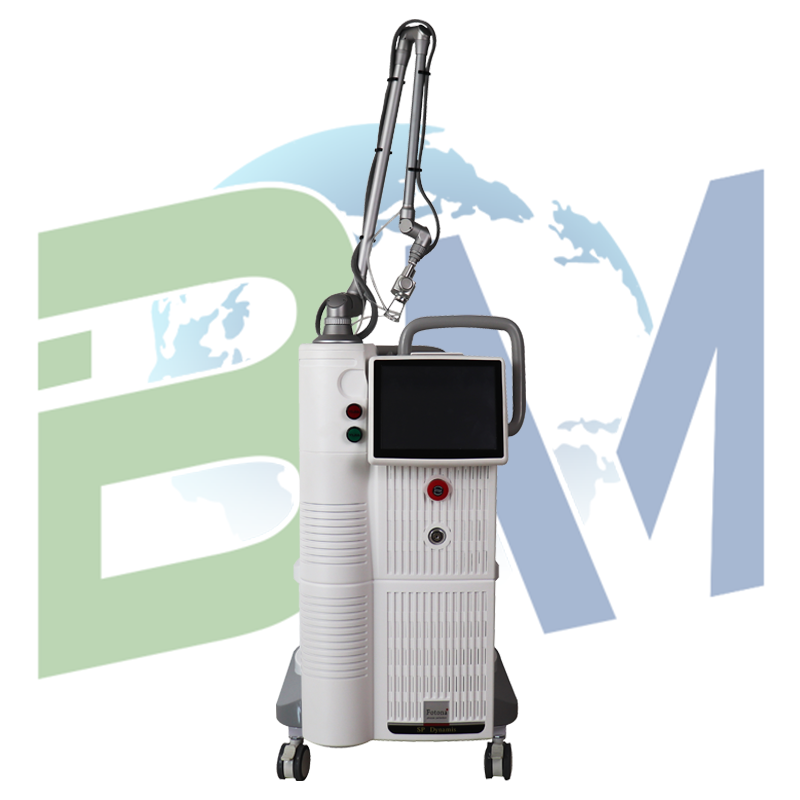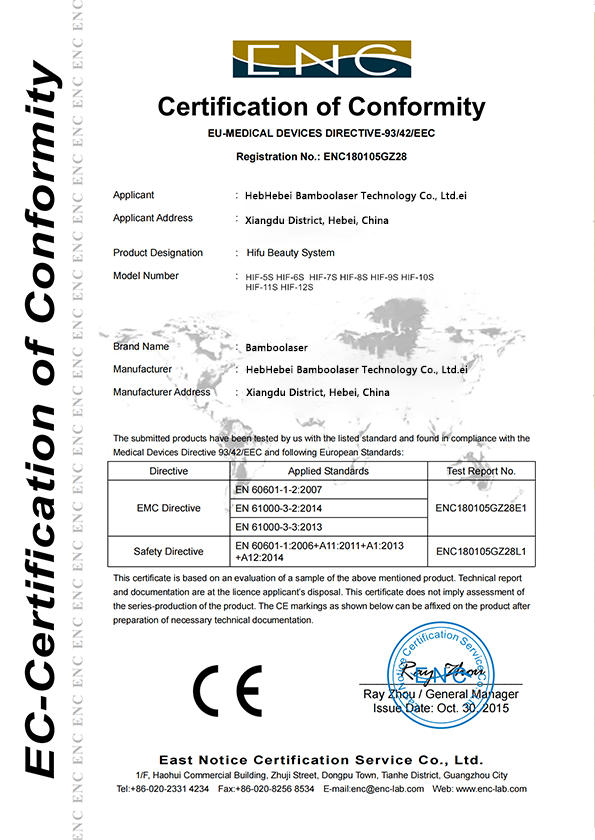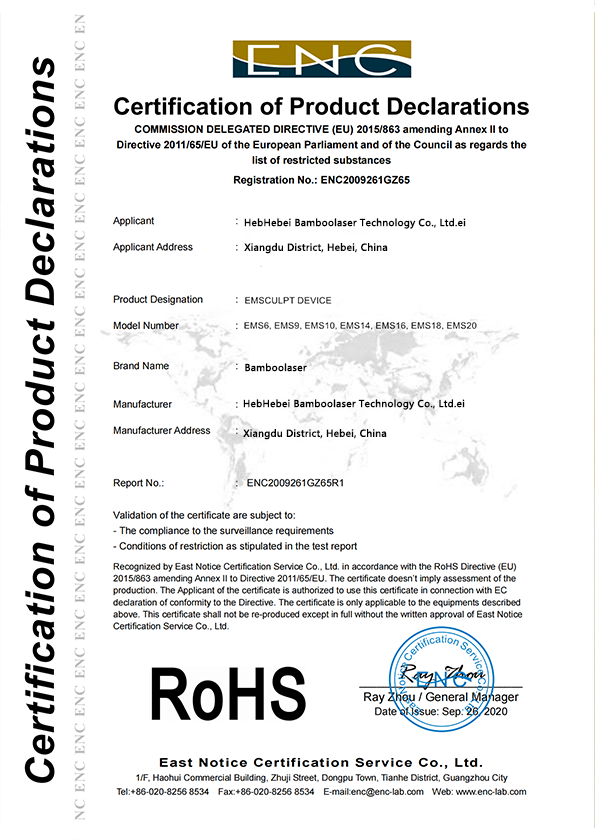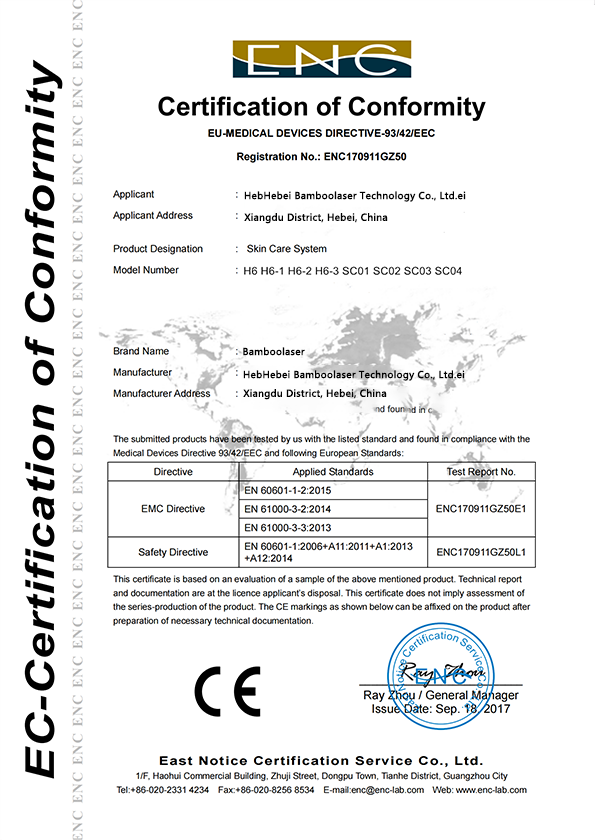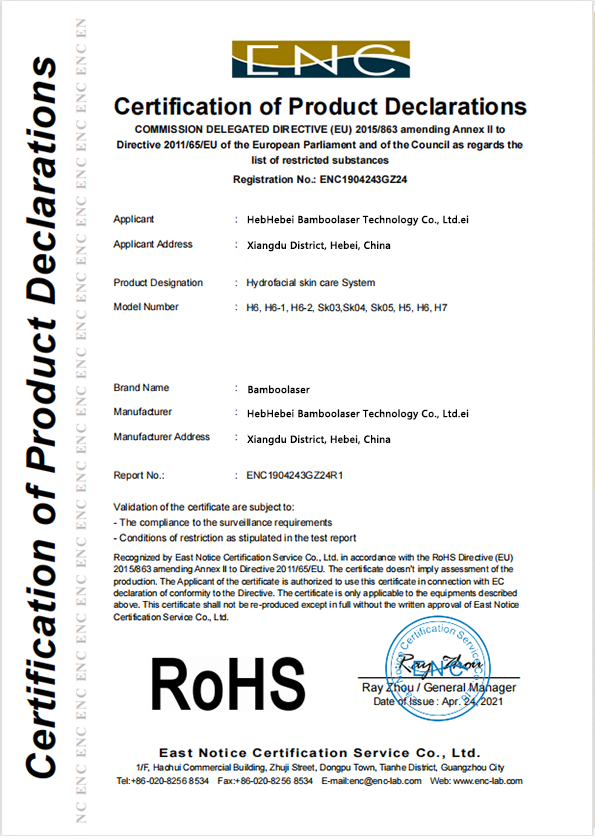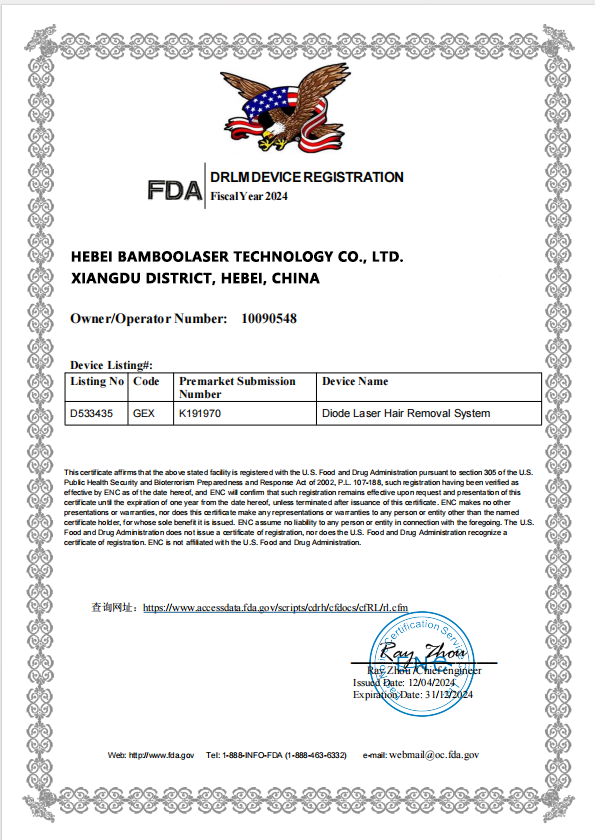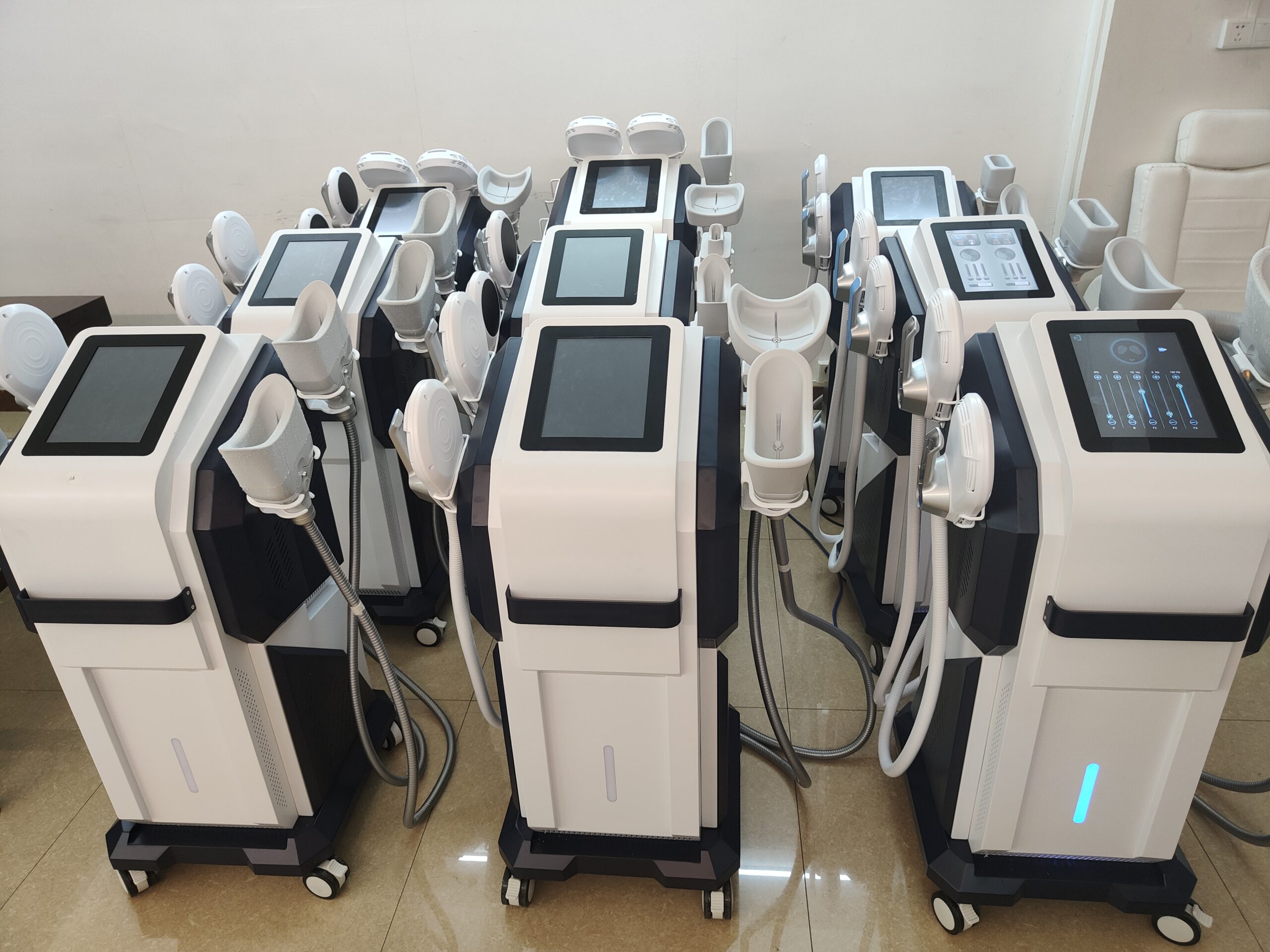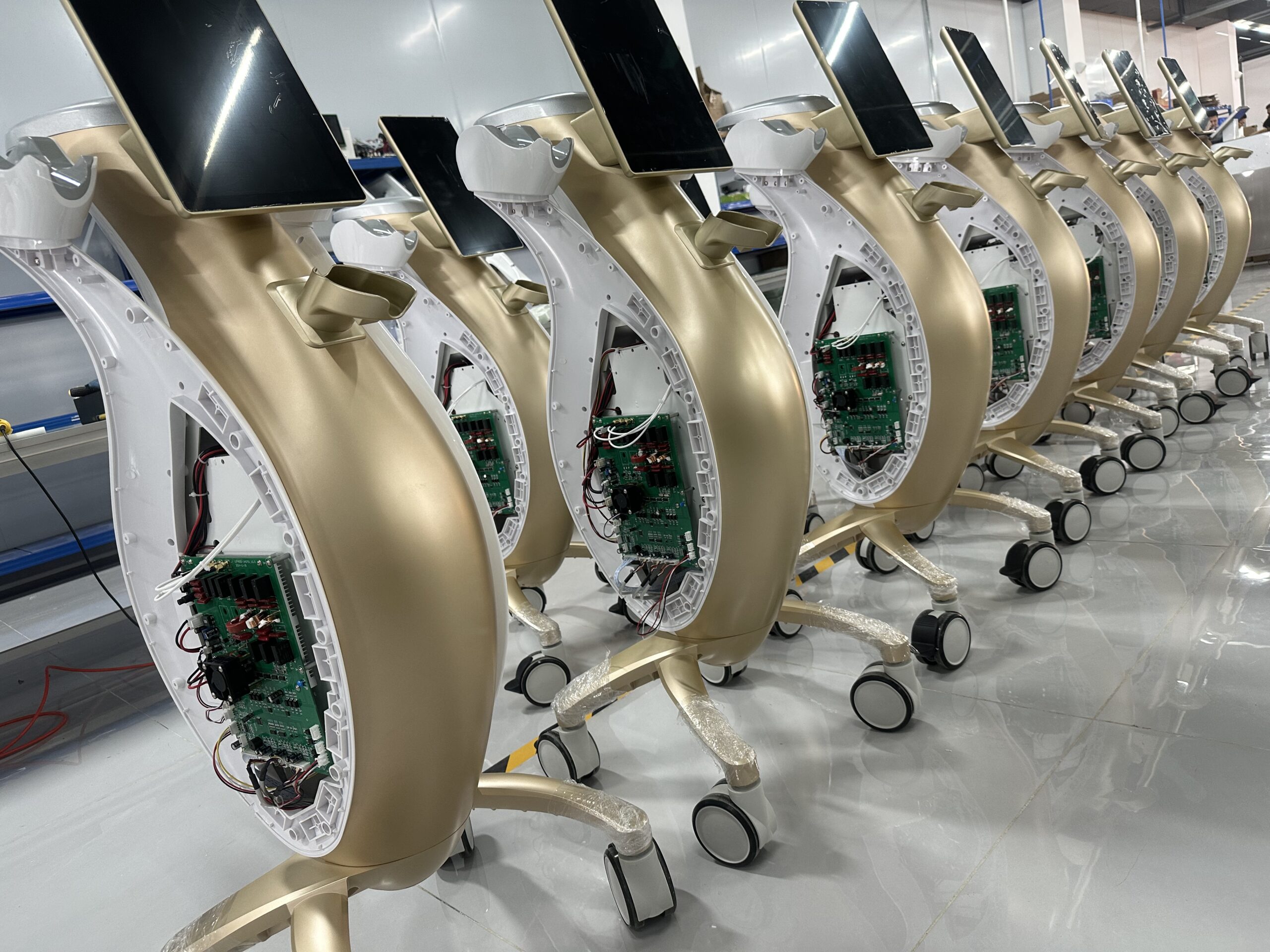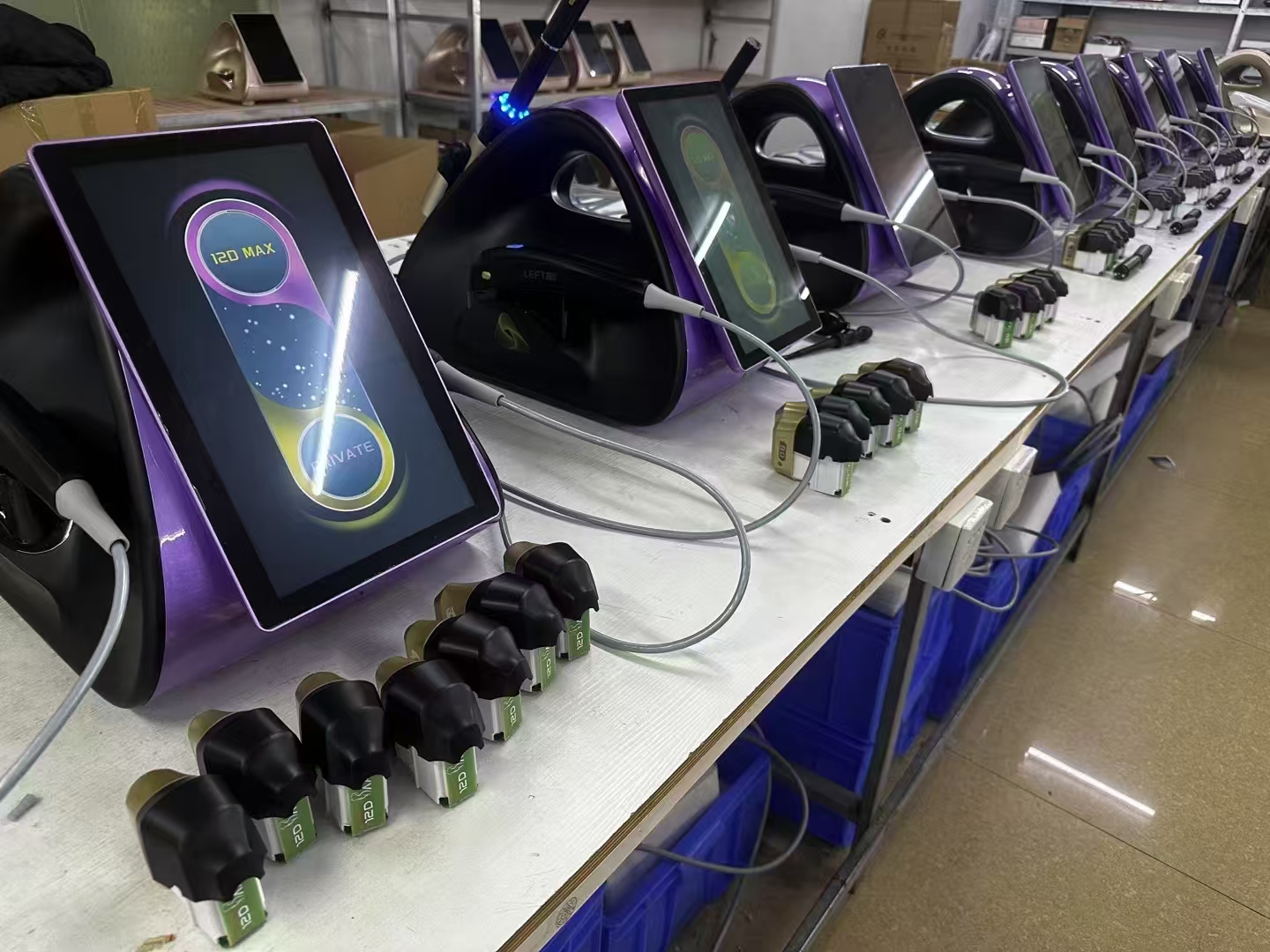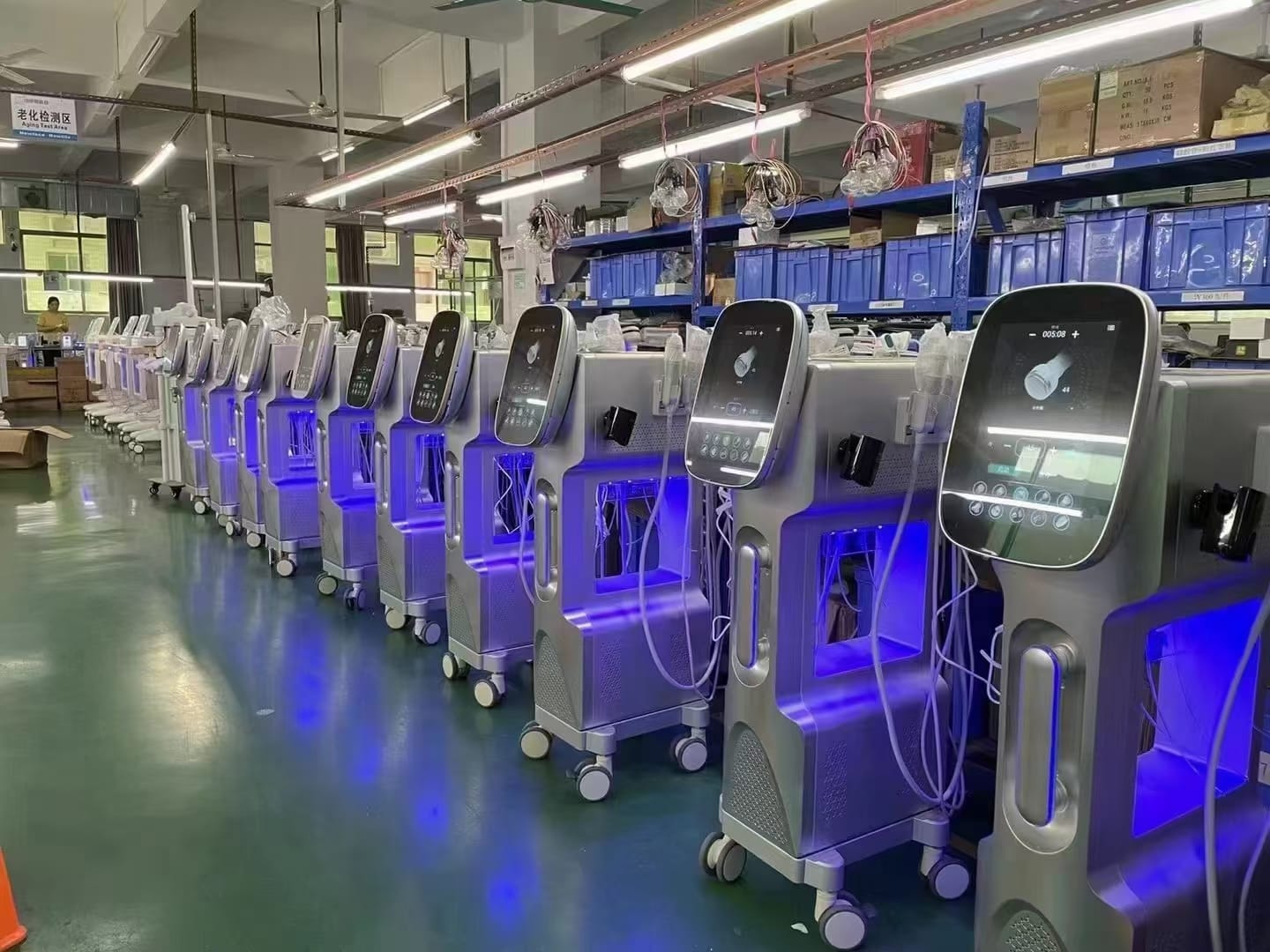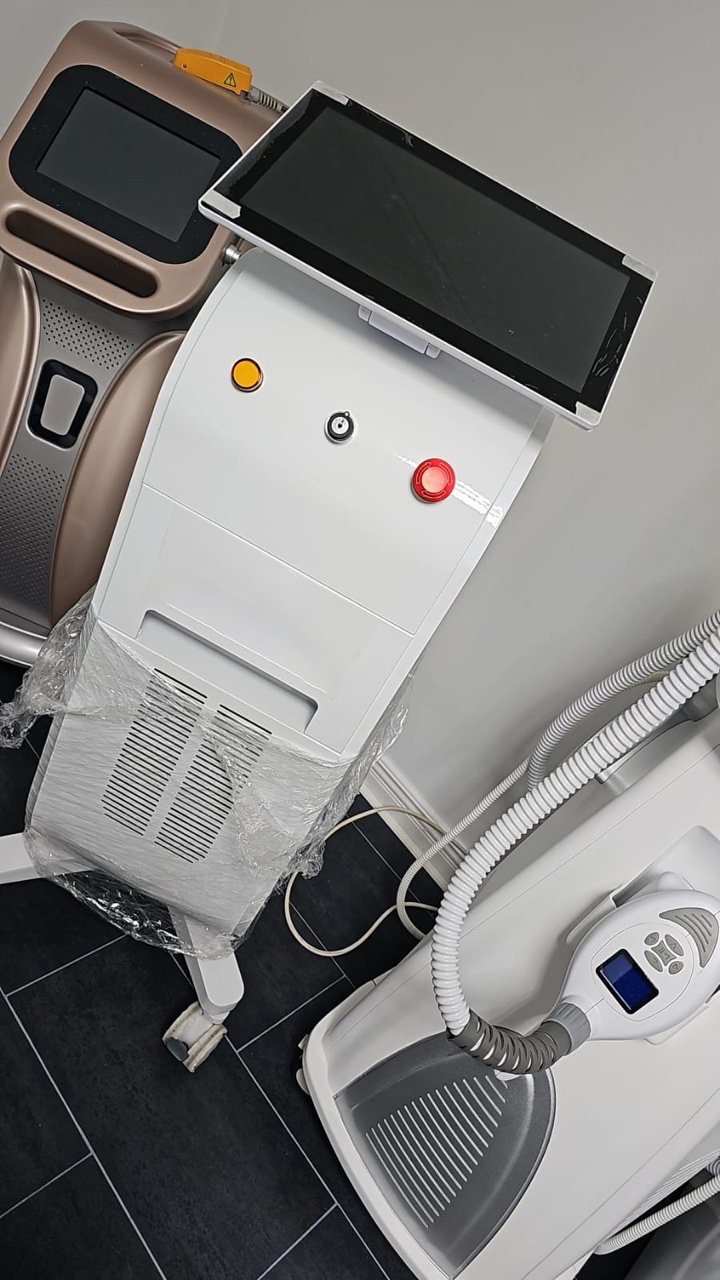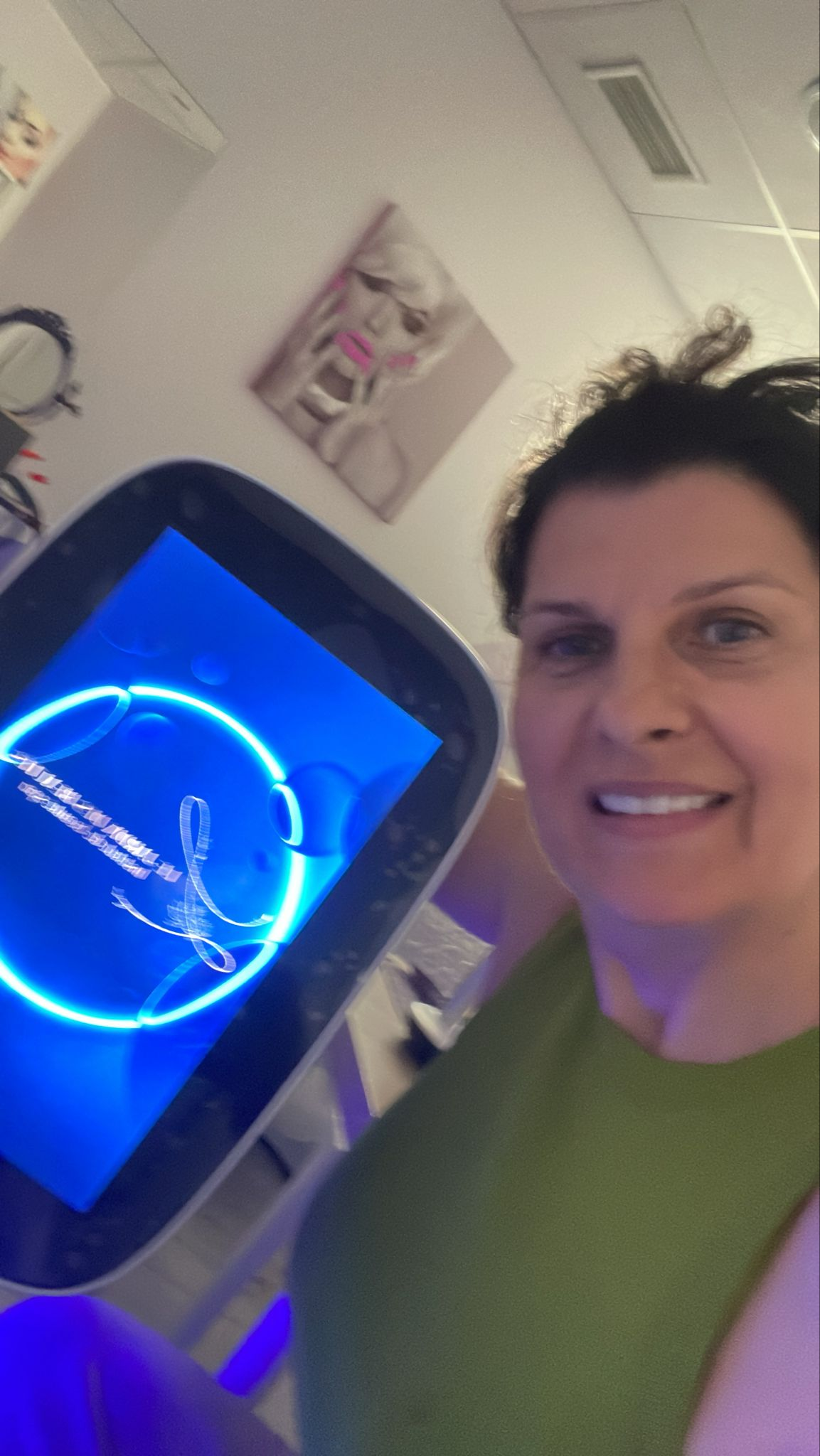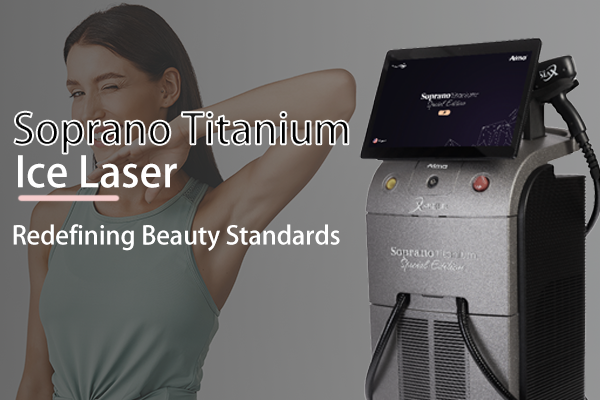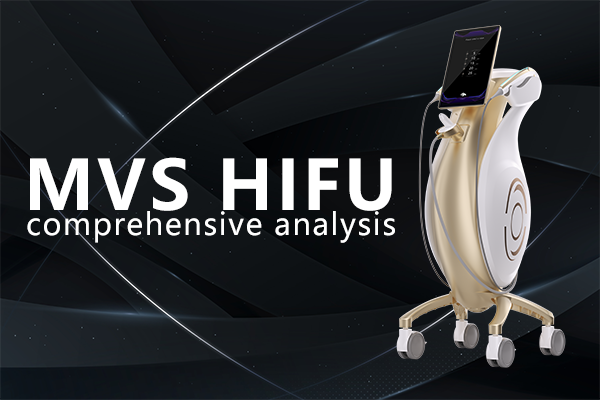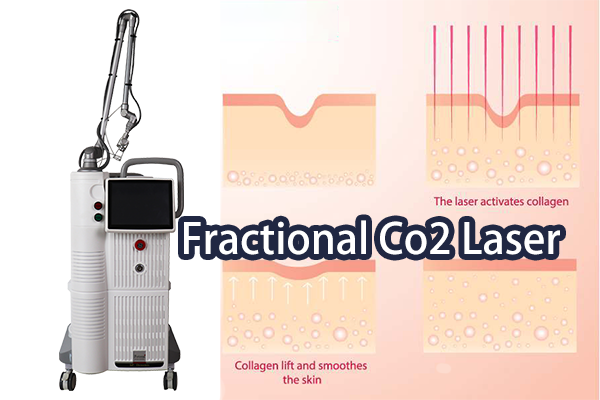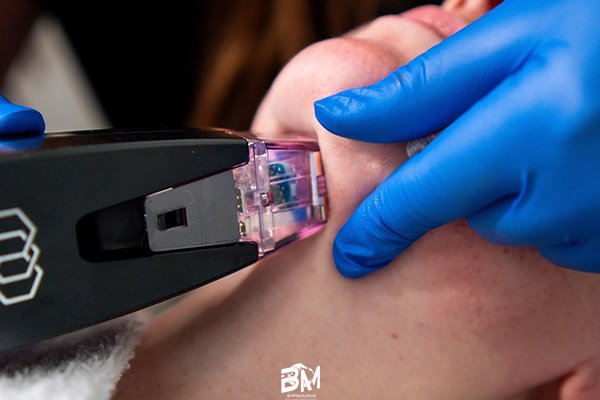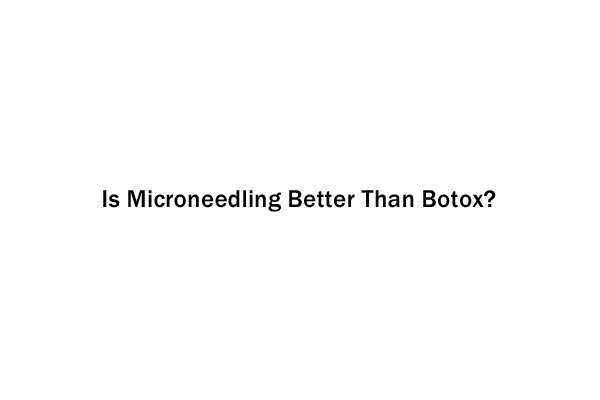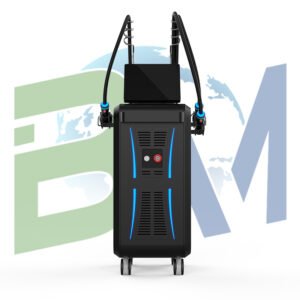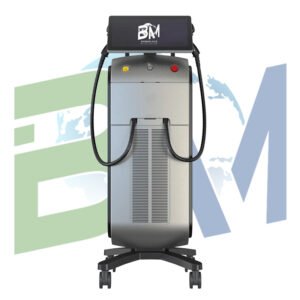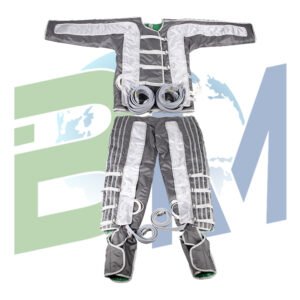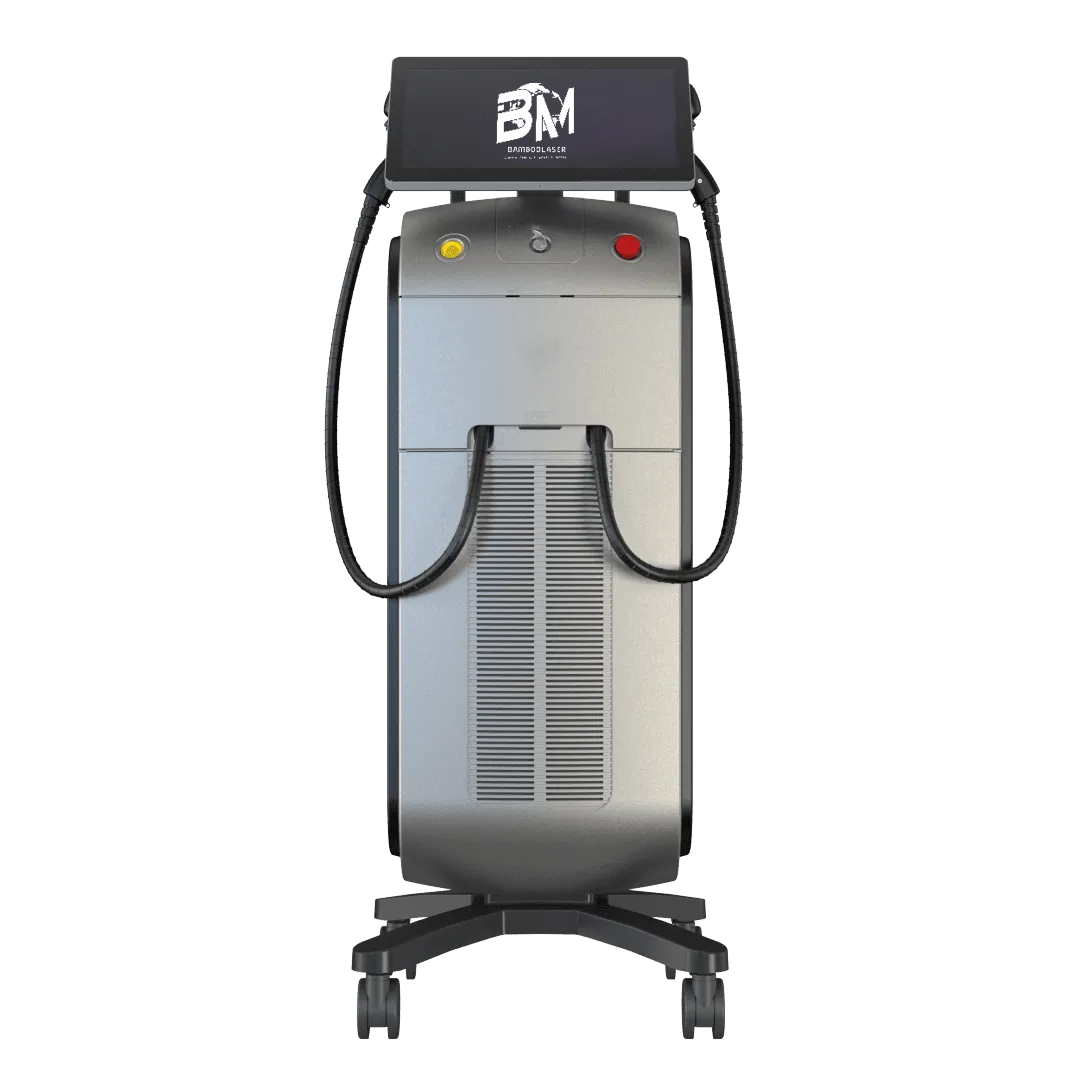The Core Advantages and Market Potential of Optical Hair Removal Technology
1.1 Technology Principle: The Integration of Precision, Efficiency, and Safety
Optical hair removal technology, centered on alexandrite laser (with a wavelength of 755nm) and combined with a flexible optical fiber guidance system, has brought about a revolutionary breakthrough in the hair removal field. The highlights of this technology include:
– Precise Targeting: The absorption efficiency of 755nm wavelength for melanin is 3 – 5 times that of traditional Nd:YAG laser (1064nm). It can penetrate to the root of hair follicles and directly destroy the stem cells of the hair papilla.
– Dynamic Cooling Protection: Intelligent contact – type cooling technology (adjustable between 0 – 5℃) protects the epidermis simultaneously, reducing pain by over 70%.
– Pulse Intelligent Adjustment: Ultra – long pulse width of 10 – 400ms adapts to different hair thicknesses, with a maximum energy density of 50J/cm², increasing single – treatment efficiency by 40%.

1.2 Global Market Growth Driver
According to Grand View Research, the global光电 hair removal market size reached $3.2 billion in 2023, with the optical hair removal technology sector growing at an annual rate of 22.7%, becoming the fastest – growing sub – field. Its market share rose from 6% in 2018 to 15% in 2023, with a penetration rate exceeding 43% in high – end beauty institutions.
– Regional Hotspots: Markets with deep – skinned populations, such as the Middle East and Southeast Asia, are growing at 35%. In the US and Europe, the procurement ratio in medical beauty clinics has risen to 28%.
– Price Positioning: Equipment unit price ranges from $38,000 to $65,000, with single – service charges between $150 and $300, yielding profit margins of 60 – 75%.
– Future Outlook: The market size is projected to exceed $4.9 billion by 2027, with the hair removal needs of deep – skinned populations expected to account for 68%.
There are many different hair removal technologies on the market. Next, we will introduce the differences between various hair removal technologies when in use.
I. Pain Index
Optical Hair Removal: Causes minimal skin irritation and is virtually pain – free during treatment, with a pain index generally between 0 – 1.
Semiconductor Laser Hair Removal: Causes a certain amount of stinging during treatment, similar to the feeling of a rubber band snapping on the skin, with a pain index of about 1 – 2.
IPL Laser Hair Removal: Causes slight discomfort during treatment, but it is generally tolerable, with a pain index of around 1.
Nd:YAG Laser Hair Removal: Causes relatively noticeable pain during treatment, with a pain index of about 2 – 3, although most people can still tolerate it.
II. Treatment Cycle
Optical Hair Removal: Generally requires 3 – 5 sessions, spaced 3 – 4 weeks apart, making the treatment cycle relatively short.
Semiconductor Laser Hair Removal: Usually requires 4 – 6 sessions, spaced 4 – 8 weeks apart, resulting in a longer treatment cycle.
IPL Laser Hair Removal: Typically requires 4 – 6 sessions, spaced 4 – 6 weeks apart, with a treatment cycle similar to semiconductor laser hair removal.
Nd:YAG Laser Hair Removal: Has a longer treatment cycle, usually requiring 6 – 8 sessions, spaced 8 – 12 weeks apart.
III. Adaptability to Different Skin Tones
Optical Hair Removal: Is well – suited for a variety of skin tones, including fair and wheatish complexions, and is less likely to cause pigmentation.
Semiconductor Laser Hair Removal: Is effective for a wide range of skin tones, particularly for lighter – skinned individuals, but also has some effect on darker – skinned patients.
IPL Laser Hair Removal: Is suitable for all skin tones, including darker ones, but requires careful parameter adjustment during treatment to reduce the risk of pigmentation.
Nd:YAG Laser Hair Removal: Is one of the best laser systems for hair removal in darker – skinned patients, with higher safety and efficacy.


IV. Hair Regrowth Rate
Optical Hair Removal: Has a lower hair regrowth rate, typically between 30% – 50%, offering better long – term results, though multiple sessions are still needed for permanent hair removal.
Semiconductor Laser Hair Removal: Has a relatively higher hair regrowth rate, generally between 65% – 75%, with longer – delayed hair regrowth after treatment, requiring multiple sessions to reduce regrowth.
IPL Laser Hair Removal: Has a hair regrowth rate similar to optical hair removal, but may be slightly inferior in long – term results, necessitating regular maintenance treatments.
Nd:YAG Laser Hair Removal: Has a relatively higher hair regrowth rate, especially for light – colored hair, where its effectiveness is less pronounced compared to other laser hair removal techniques.
V. Single – Session Duration
Optical Hair Removal: Treats quickly, with a single session typically lasting 10 – 30 minutes, depending on the size of the hair – removal area.
Semiconductor Laser Hair Removal: Also has a relatively short treatment time, usually 15 – 40 minutes per session.
IPL Laser Hair Removal: With its large – sized light spot and wide coverage, a single session generally takes 20 – 50 minutes.
Nd:YAG Laser Hair Removal: Takes slightly longer, usually 30 – 60 minutes per session.
VI. The Core Competitiveness of Optical Hair Removal
Precision: Optical hair removal can accurately transmit laser energy to hair follicles, enhancing destruction while reducing skin damage.
Comfort: Optical hair removal uses a special cooling system, such as the Chilltip contact – cooling system, which protects the skin during treatment, reducing pain and damage.
Safety: Optical hair removal is highly safe, with good adaptability to various skin tones and lower risk of side effects like pigmentation, making it suitable for different skin types.
Rapid Results: Optical hair removal is highly effective, quickly reducing hair count and meeting the demand for fast hair removal.


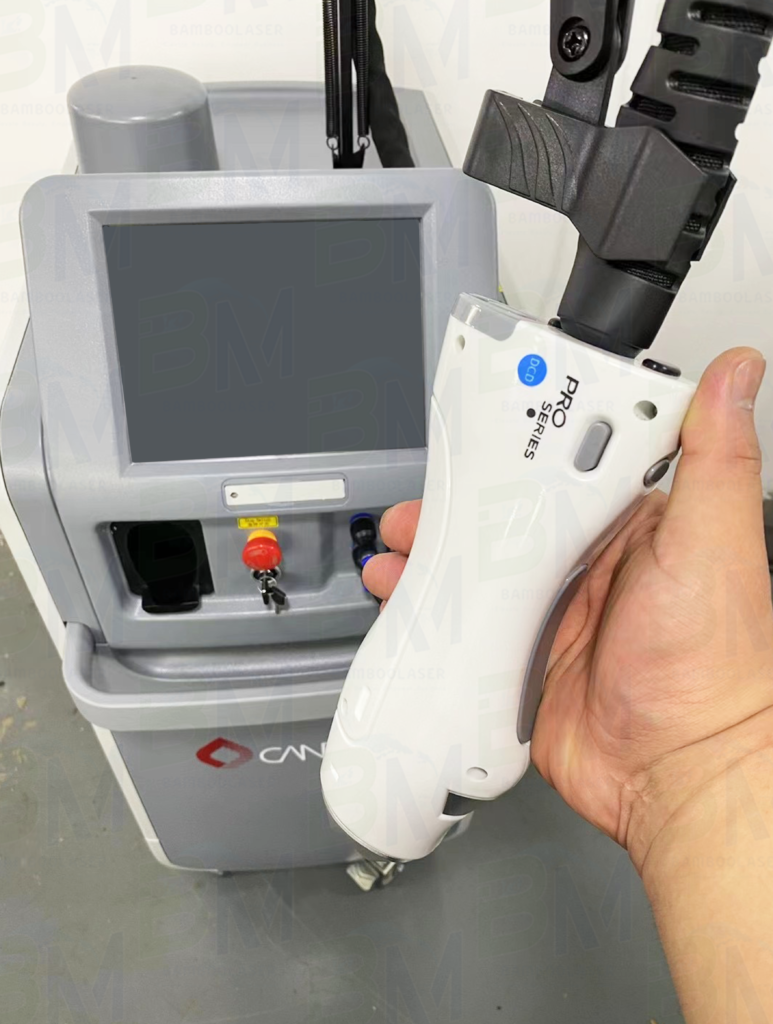
Now, let’s look at the comparison of advantages and disadvantages of these four technologies in the market.
- Initial Cost
Optical Hair Removal: The initial investment cost of optical hair – removal equipment is relatively high due to the complexity of optical – laser technology and manufacturing costs. However, in the long run, optical hair – removal equipment has a long service life and low consumable costs, offering high cost – effectiveness.
Semiconductor Laser Hair Removal: The initial cost of semiconductor laser hair – removal equipment is relatively low, with mature technology and lower manufacturing costs. Additionally, its repair and replacement costs are also low, making it suitable for small and medium – sized beauty salons.
IPL Laser Hair Removal: The initial cost of IPL laser hair – removal equipment is relatively high, requiring special lamps and filters with high costs. Moreover, the maintenance cost of IPL equipment is also high, with regular lamp and filter replacements needed.
Nd:YAG Laser Hair Removal: The initial investment cost of Nd:YAG laser hair – removal equipment is relatively low, with high technical maturity and low manufacturing costs, making it suitable for beauty salons with limited budgets.
- Operator Training Difficulty
Optical Hair Removal: Optical hair – removal technology is relatively easy to operate. However, due to the small light spot of optical hair – removal equipment, precise control of the light – spot position and energy density is required during operation. Additionally, certain skills such as sliding – type fast operation are needed, which requires specialized training for operators.
Semiconductor Laser Hair Removal: The difficulty of operating semiconductor laser hair – removal technology is moderate. Operators need to master the settings and adjustments of laser parameters and gain certain operational skills and experience during the process.
IPL Laser Hair Removal: IPL laser hair – removal technology is relatively difficult to operate. With a wide light spectrum and dispersed energy, precise control of energy density and pulse width is required during operation. Moreover, operators must avoid overlapping and missing light spots to prevent customer complaints.
Nd:YAG Laser Hair Removal: The difficulty of operating Nd:YAG laser hair – removal technology is relatively high. Due to its long wavelength and strong penetration, precise control of energy density and pulse width is required during operation to avoid skin damage.
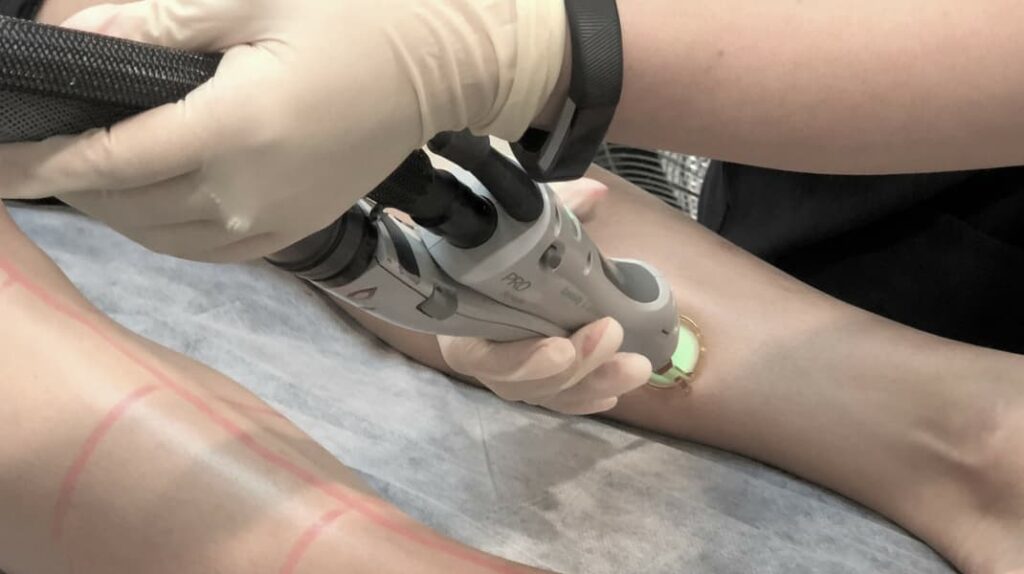
- Customer Complaint Rate
Optical Hair Removal: Optical hair removal has a relatively low customer complaint rate. This is mainly due to the high precision and safety of optical hair – removal technology, which can effectively reduce hair regrowth and skin damage. Moreover, the cooling effect of optical hair – removal equipment is good, protecting the epidermis and reducing pain.
Semiconductor Laser Hair Removal: The customer complaint rate for semiconductor laser hair removal is moderate. This technology offers good hair – removal results but may cause certain skin damage and pain.
IPL Laser Hair Removal: IPL laser hair removal has a relatively high customer complaint rate. The dispersed energy of IPL technology may lead to skin pigmentation and redness. Additionally, the high operational difficulty of IPL equipment can result in operational errors and customer complaints.
Nd:YAG Laser Hair Removal: The customer complaint rate for Nd:YAG laser hair removal is moderate. This technology is effective for dark hair but may cause certain skin damage and pain.

The above introduces the comparison of the four technologies during use. Among them, optical hair – removal technology stands out with its clinical – effect certainty (over 95% customer satisfaction) and replicable business model, reshaping the global hair – removal market landscape. Optical hair – removal laser machines have become the preferred choice for beauty centers and clinics. For beauty institutions, introducing this equipment is not only a technological upgrade but also a strategic choice to capture high – end customers and enhance profitability.


